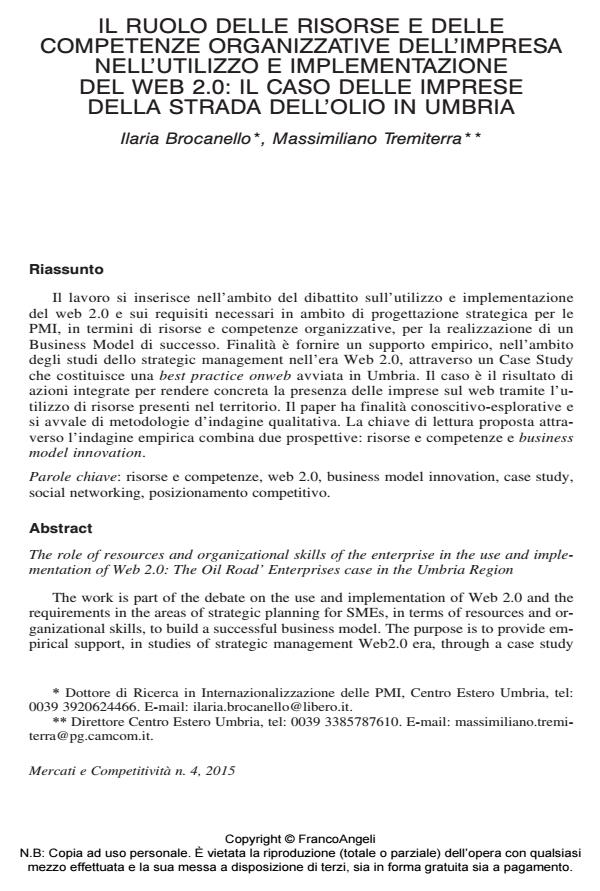The role of resources and organizational skills of the enterprise in the use and implementation of Web 2.0: The Oil Road’ Enterprises case in the Umbria Region
Journal title MERCATI E COMPETITIVITÀ
Author/s Ilaria Broncanello, Massimiliano Tremiterra
Publishing Year 2015 Issue 2015/4
Language Italian Pages 27 P. 105-131 File size 158 KB
DOI 10.3280/MC2015-004006
DOI is like a bar code for intellectual property: to have more infomation
click here
Below, you can see the article first page
If you want to buy this article in PDF format, you can do it, following the instructions to buy download credits

FrancoAngeli is member of Publishers International Linking Association, Inc (PILA), a not-for-profit association which run the CrossRef service enabling links to and from online scholarly content.
The work is part of the debate on the use and implementation of Web 2.0 and the requirements in the areas of strategic planning for SMEs, in terms of resources and organizational skills, to build a successful business model. The purpose is to provide empirical support, in studies of strategic management Web2.0 era, through a case study which is a best practice OnWeb started in Umbria. The case is the result of integrated actions to realize your business presence on the web through the use of resources in the area. The paper has a cognitive-exploratory purposes and uses methods of qualitative research. The key to the proposal through empirical research combines two perspectives: resources and expertise and business model innovation.
Keywords: Resources and skills, web 2.0, business model innovation, case study, social networking, competitive positioning.
- The First Outstanding 50 Years of “Università Politecnica delle Marche” Federica Pascucci, Valerio Temperini, Luca Marinelli, Maria Rosaria Marcone, pp.197 (ISBN:978-3-030-33878-7)
- The Managerial Transformation of Italian Co-Operative Enterprises 1946-2010 Patrizia Battilani, Vera Zamagni, in SSRN Electronic Journal /2011
DOI: 10.2139/ssrn.1932625
Ilaria Broncanello, Massimiliano Tremiterra, Il ruolo delle risorse e delle competenze organizzative dell’impresa nell’utilizzo e implementazione del web 2.0: il caso delle imprese della strada dell’olio in Umbria in "MERCATI E COMPETITIVITÀ" 4/2015, pp 105-131, DOI: 10.3280/MC2015-004006